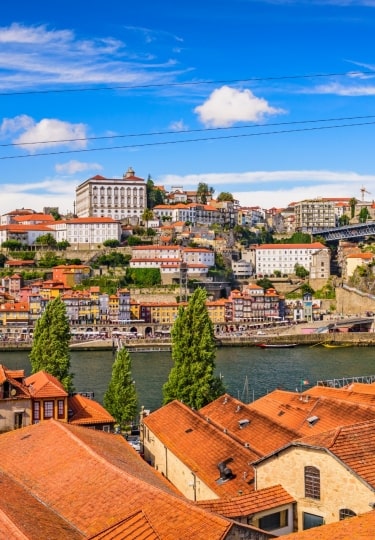Ask a native from either of Portugal’s two major cities whether you should visit Porto or Lisbon, and you’ll receive a fierce-yet-lyrical serenade detailing why their hometown shines brightest.
This passionate, proud, and often playful rivalry dates back centuries and encompasses everything from football and food to the regional terms for cervejas and coffees.
Thankfully, as a traveler, there’s no need to join the locals for the Lisbon vs Porto debate—the two cities are enchanting in equal measures. UNESCO-listed neighborhoods, world-class museums, and catch-of-the-day culinary experiences await in both, while sun-bleached beaches are a brief hop from either urban center.
Still, the question remains: should you explore Lisbon or Porto first? To help make the decision easier, start by comparing the two cities’ highlights, contrasts, and standout attractions.
Weather & Best Time to Visit
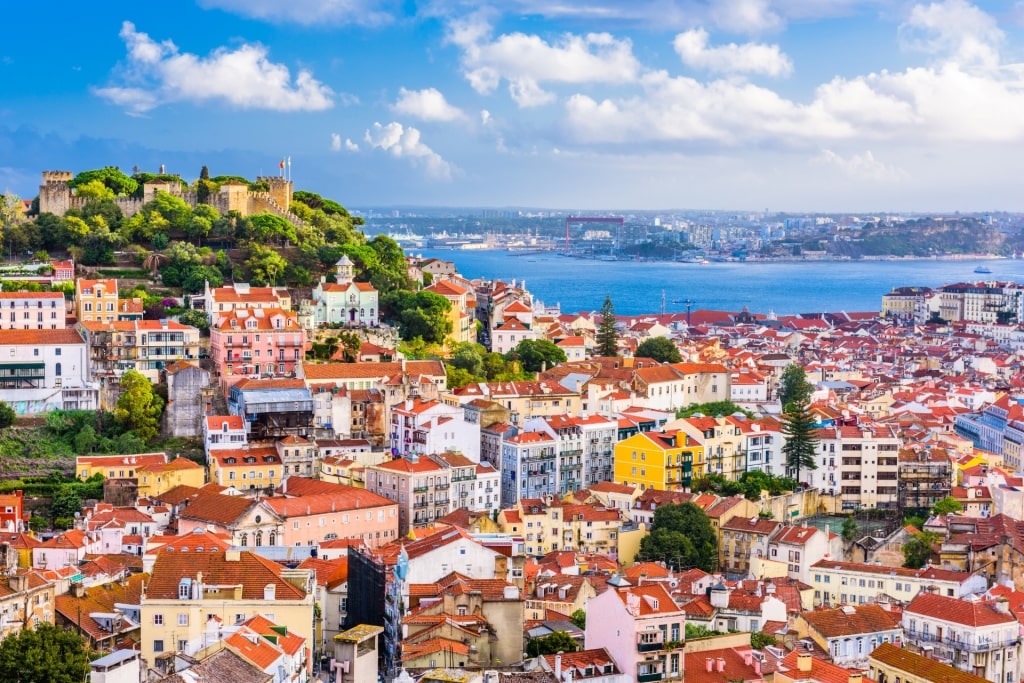
Lisbon
Both Portugal’s charismatic capital and wine-focused second city sizzle in summer, when long, sun-drenched days are the norm and temperatures regularly run above the country’s summer average of 84°F (29°C).
Luckily, both cities are slightly inland from the Atlantic, and the ocean breeze on those hottest days is a gift.
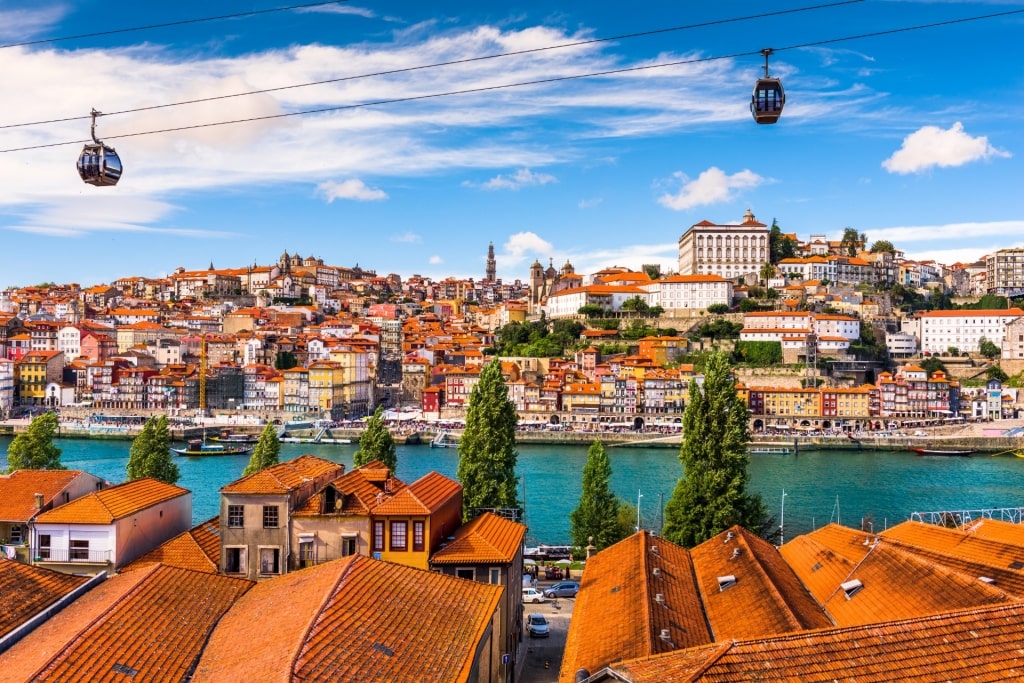
Porto
During spring and fall—perhaps the best time to visit Portugal’s cities for mostly blue skies and warm rather than intense summer heat—you’ll find there isn’t much difference in the Lisbon vs Porto climate debate.
There might be a little more cloud cover in the north, but a spot of shade for city sightseeing is often welcome.
With just 170 miles (274 km) between the two cities, the weather differences can be negligible, although winter variations are more pronounced, especially as Porto gets close to double Lisbon’s annual rainfall then.
History & Culture
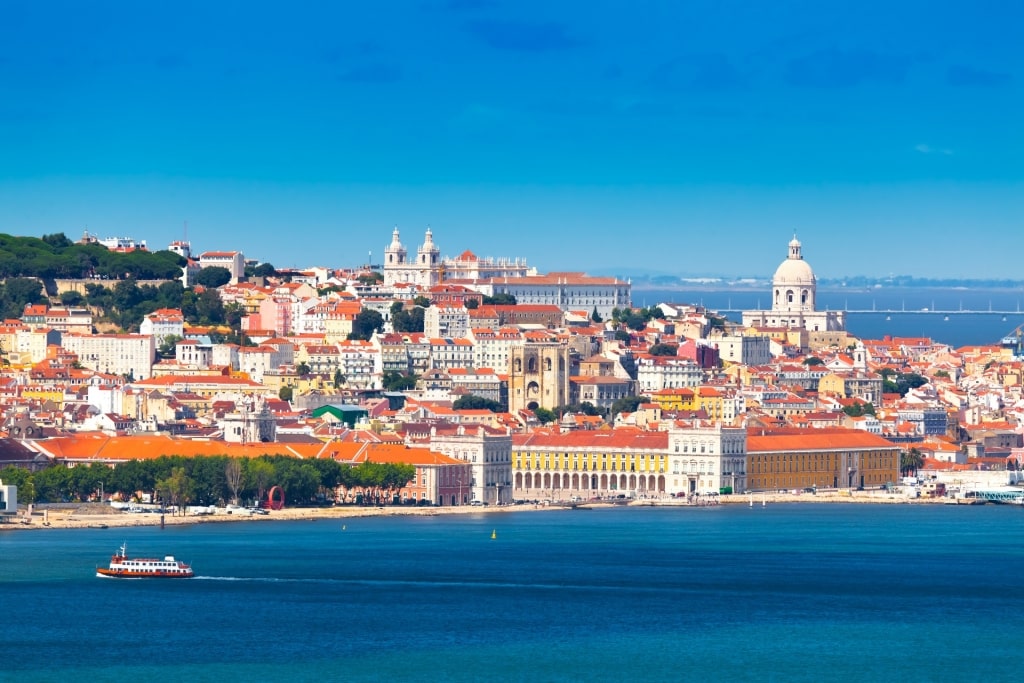
Lisbon
If you’re hoping to find an easy conclusion to the Lisbon vs Porto debate by delving into the pair’s history, you’ll be sorely disappointed. Both storied cities carry a sizable historic weight atop their shoulders.
Lisbon is one of the oldest cities in Europe, with the Phoenicians likely establishing it around 3,000 years ago. Since then, It has been an outpost for many, such as the Greeks, Carthaginians, and Romans, who called it Olisipo.
The nation’s capital since 1256, the city soon flourished during Portugal’s colonial and “exploration” years, known as the Age of Discovery.

Jerónimos Monastery, Lisbon
Sadly, a devastating earthquake struck the city in 1755, destroying much of the capital’s historical architecture. Some sights remain standing in part, such as the now open-roofed Carmo Convent. Others, such as the magnificent Jerónimos Monastery and historic Moorish neighborhood of Alfama, survived relatively unscathed.
Following the devastation, the city was rebuilt using a grid layout by the Marquis of Pombal, creating the Lisbon you’ll see today, its new-found appearance spilling over the city’s seven hills.
Porto’s history also dates back millennia, with its title hailing from the Roman name for the city, Portus Cale, a term that would also be passed on to the country’s fortified wine and, indeed, the nation itself.
After some far-from-peaceful battles between the Visigoths, Moors and Christians, it eventually became a booming port city once more in the 14th century.
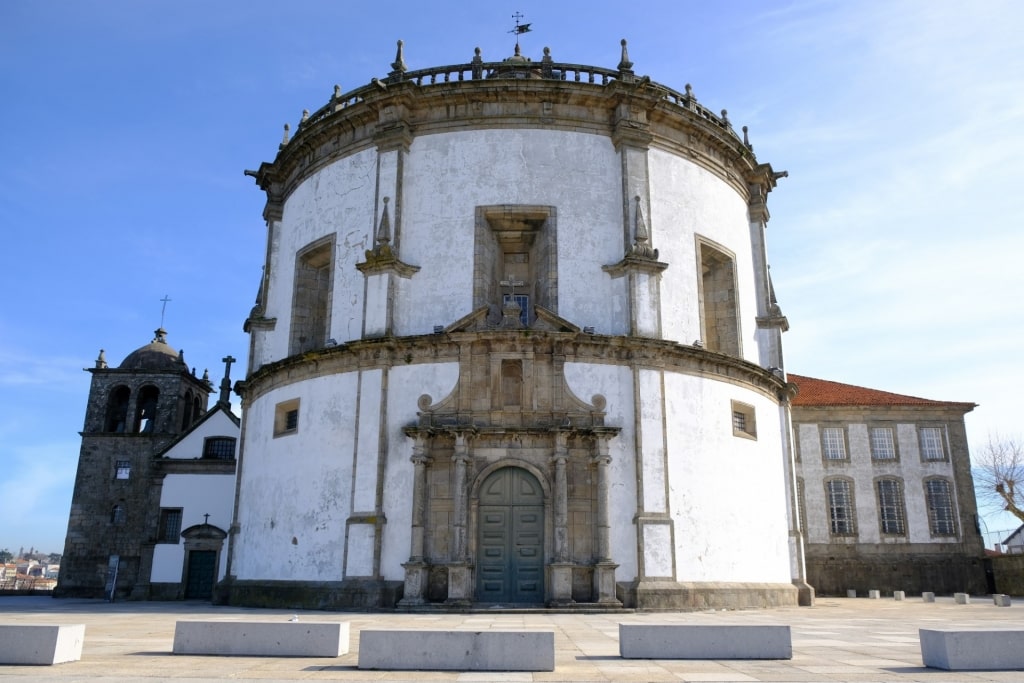
Serra do Pilar Monastery, Lisbon
Splendid aged buildings can be spotted around the UNESCO-listed historic center, with the 16th-century Serra do Pilar Monastery and 13th-century Cathedral (the Sé, later renovated in Baroque style) particularly impressive. However, it’s the city’s trade of goods—most notably wine, Port, leather, and tinned fish—that has rounded out its more recent historical chapters.
But, while there are different backstories for both cities, many cultural similarities also remain. The country’s renowned azulejos (hand-painted tiles) can be spotted everywhere, and both are carpeted with calçadas (Portuguese patterned pavements).
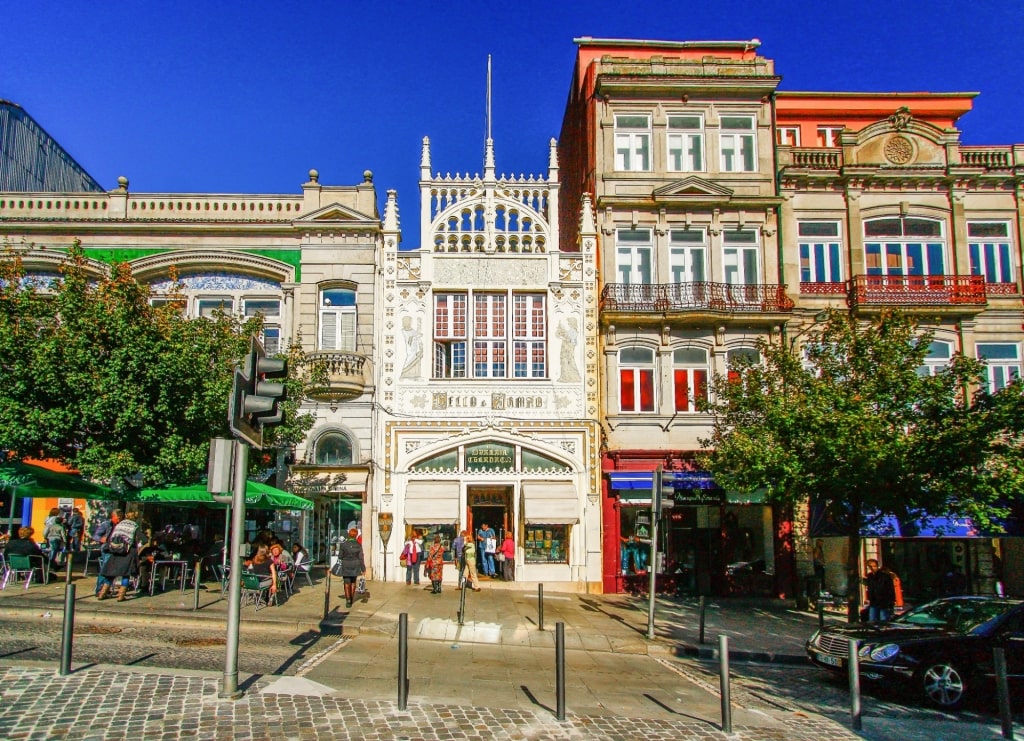
Livraria Lello, Porto
They pair even have competing literary credentials, with Lisbon being home to the oldest bookshop in the world (Bertrand) and Porto claiming the most beautiful (Livraria Lello in Porto)—clearly, these two cultured cities don’t want to be exceeded by the other.
Attractions & Things To Do

Praça do Comércio, Lisbon
Should your Lisbon vs Porto decision rest solely on comparing the cities’ landmarks, attractions and top things to do, then the capital’s size propels it slightly ahead.
Being the country’s cultural hub and largest city, each neighborhood in Lisbon has its own character and attractions.
Spend a morning strolling through Alfama, the old Moorish quarter, seeking sardines and souvenirs, followed by an afternoon of riverside strolls, modern art, and Manueline architecture; Lisbon certainly packs plenty into its boundaries.

Castelo de São Jorge, Lisbon
Other things to do in Lisbon include visiting Castelo de São Jorge, an extensive fortification that surveys the city from its prime hilltop position; the river-facing Praça do Comércio, a vast square flanked by grand mustard-hued buildings; and the Ponte 25 de Abril, which bears a strong resemblance to San Francisco’s iconic red bridge.

Belém Tower, Lisbon
Across town, the Belém district is a destination unto itself. Not only is this neighborhood home to numerous monuments, museums and the original Pastel de Belém (or Pastel de Nata) but also the Manueline-style Jerónimos Monastery and Belém Tower, which combined have gained UNESCO status.
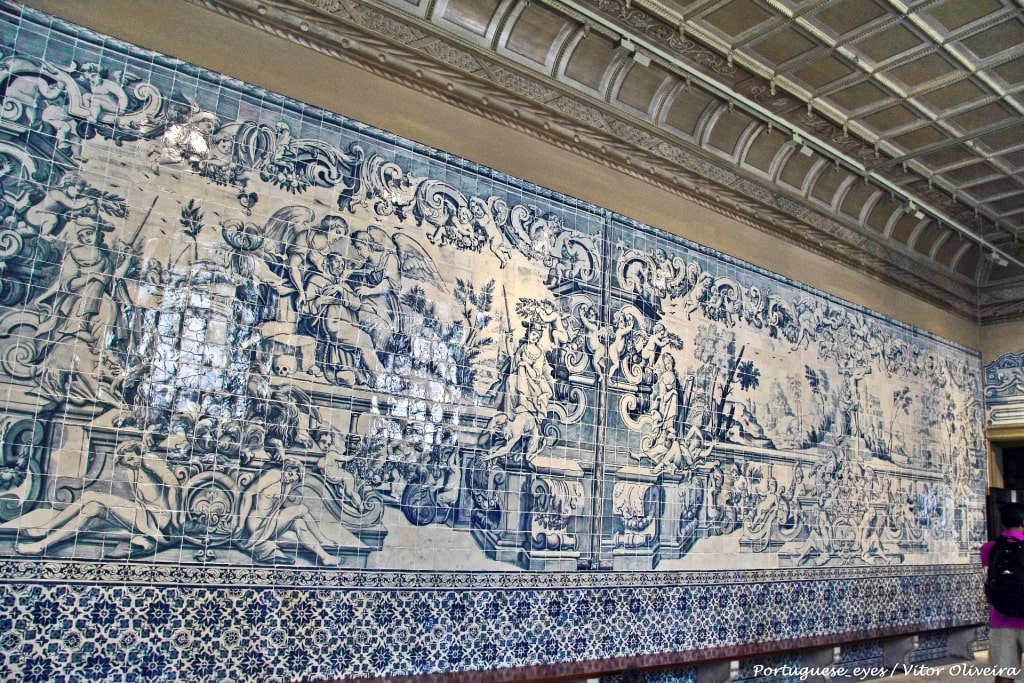
Museu Nacional de Azulejo, Lisbon Photo by Vitor Oliveira on Wikimedia Commons, licensed under CC BY-SA 2.0
Then there are Lisbon’s numerous museums. Learn all about azulejos, Portugal’s beautiful hand-painted tiles, at the Museu Nacional de Azulejo, understand the city’s history and the devastating earthquake of 1755 at the Lisboa Story or delve into the musical soul of the nation at the Fado Museum.
Aiming not to be outdone, Porto has more than stepped up to the challenge in recent years, with a flurry of new museums and attractions opening.
The largest, the expansive World of Wine cultural complex, is set across the river in Vila Nova de Gaia, where no less than six museums—including the in-depth Wine Experience—are accompanied by restaurants and bars.
For something more traditional, one of the best things to do in Porto is to join a tour or tasting of the vintage Port lodges huddled nearby.
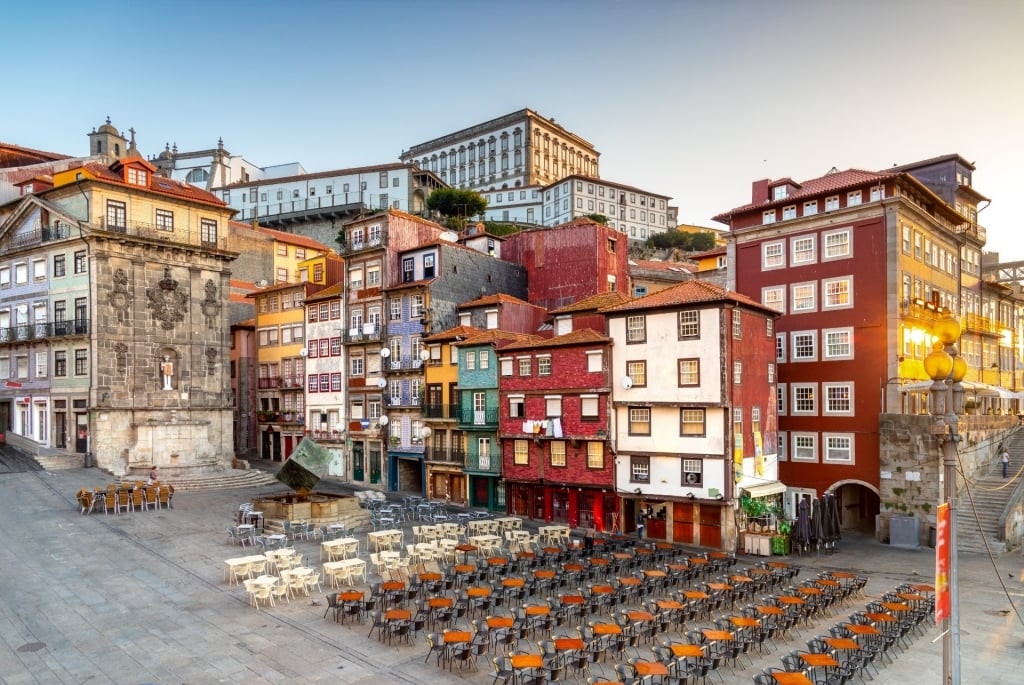
Ribeira Square, Porto
Back across the iconic Dom Luís I Bridge in Porto proper, the rest of the city’s attractions climb the hill rising from the river-facing Ribeira Square, a major landmark.
In fact, the whole of Porto’s historic center is celebrated as a UNESCO World Heritage Site, which some would argue gives it the edge over Lisbon.
But it’s not just the old-world streets strung with drying laundry which deserve your attention, as there is plenty to explore behind the city’s often blue-and-white-tiled facades.
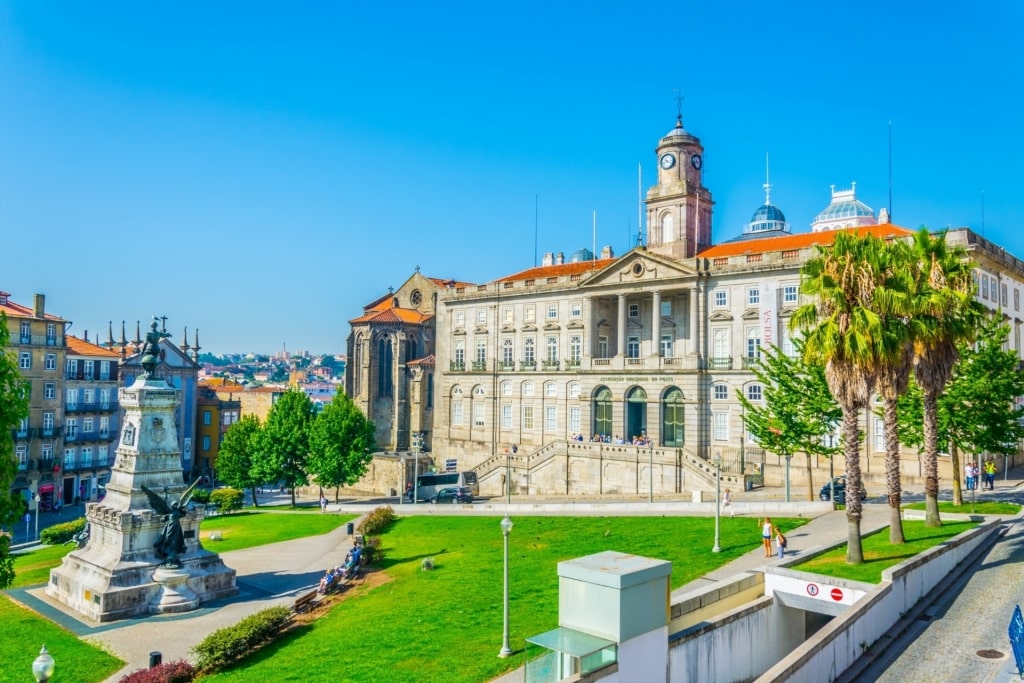
Palacio da Bolsa, Porto
Book a tour of the elaborate Palacio da Bolsa, where an Islamic-inspired gold-clad room astounds; venture to the top of the Clerigos Church Tower for city-spanning views; and slip away to out-of-town Serralves—the county’s second-most popular museum after Lisbon’s Calouste Gulbenkian Collection—where art and nature collide.
Culinary Experiences

Francesinha
When it comes to the cuisine that Portugal is famous for, there’s great rivalry between the locals, with Portoinese and Lisboetas having disagreements on everything from who has the best seafood and sandwiches, right down to how to order a beer (fino or imperial) or a shot of espresso (cimbalino vs bica).
There are even different food-related nicknames for the local residents, with Porto’s population known as tripeiros (trip eaters) and Lisbon-dwellers labeled as alfacinhas (little lettuces).

Tripas à Moda do Porto
Porto’s moniker hails from the days when the city was sending its best meat to support the country’s seafarers, leaving locals with little more than intestines and poor cuts.
Tripas à Moda do Porto remains one of the Porto’s signature dishes, with the bean and meat stew served up regularly as a prato do dia (dish of the day).
Another of the city’s staples, the francesinha, is a towering sandwich similar to a croque monsieur, albeit with a much more meat-stacked and sauce-soaked presentation.

Oysters
However, it’s not all hearty dishes in the north, with local seafood, such as trout, eel, hake, oysters, and sardines making appearances on both high-end Michelin-starred menus and in more traditional cervejarias.
Down in Lisbon—and indeed along the country’s whole coast—seafood is equally as dominant and delicious, with marisqueiras the places to head for platters of carmine-colored prawns and dressed crab.
Like Porto, Lisbon also has its own signature sandwich, the steak-filled prego, which is curiously often considered a post-crustacean dessert.

Pastel de Nata
But the city’s most famous export to the world is surely the Pastel de Nata, a creamy convent-created custard egg tart that tastes best topped with a sprinkling of cinnamon—a perfect treat while exploring Lisbon with kids.
The recipe hails from the nuns of Belém’s monastery, and the most typical place to sample them in the city is the nearby Pastéis de Belém shop, which shares the original name of the pastries.
With no clear winner in the Lisbon vs Porto food debate, we have to turn to local tipples, and here, the capital is pipped to the post by Porto.

Ginjinha
With the northern city’s historic Port lodges offering timeless settings for tastings and the Douro’s wines being held in higher esteem than those from the Lisbon region, there really is no competition—although a glass of Lisbon’s cherry-infused ginjinha liquor is far from a consolation prize, especially when enjoyed from a chocolate cup.
Read: What to Eat in Lisbon
Beaches
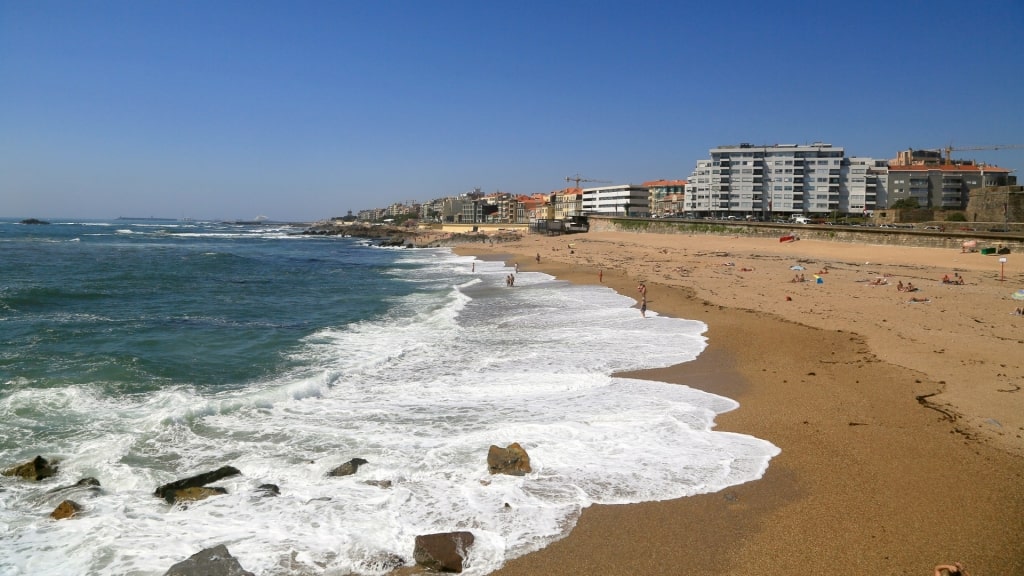
Foz do Douro, Porto
For sun-seekers, surfers, and swimmers, Portugal’s seemingly never-ending Atlantic coastline is an absolute treat. Both of the country’s major cities are considered coastal, but the answer to whether Porto or Lisbon is best for beaches is a little more complicated.
On paper, Porto’s beaches should beat Lisbon, as the northern city’s upscale Foz do Douro district has its own stretches of golden sand.
Meanwhile, the closest beaches in Lisbon to lounge and bathe are in the Lisbon Metropolitan Area, outside the city limits.
Still, distance isn’t the only factor to consider when examining the beach scene in each city. Once you take into consideration climate—especially the stronger Atlantic winds up north—beauty and choice, the capital perhaps comes out top.

Arrábida National Park, near Lisbon
In under an hour from Lisbon, you can be transported to the Caribbean-esque, vegetation-backed bays in the Arrábida National Park, the laid-back beach clubs of Costa da Caparica, or the more dramatic cliff-backed bays around Sintra and Cabo da Roca, the westernmost point of continental Europe.
That’s not to say you won’t find some of the best beaches in Portugal near Porto—the whole country is a trove of alluring sands.
Day Trips
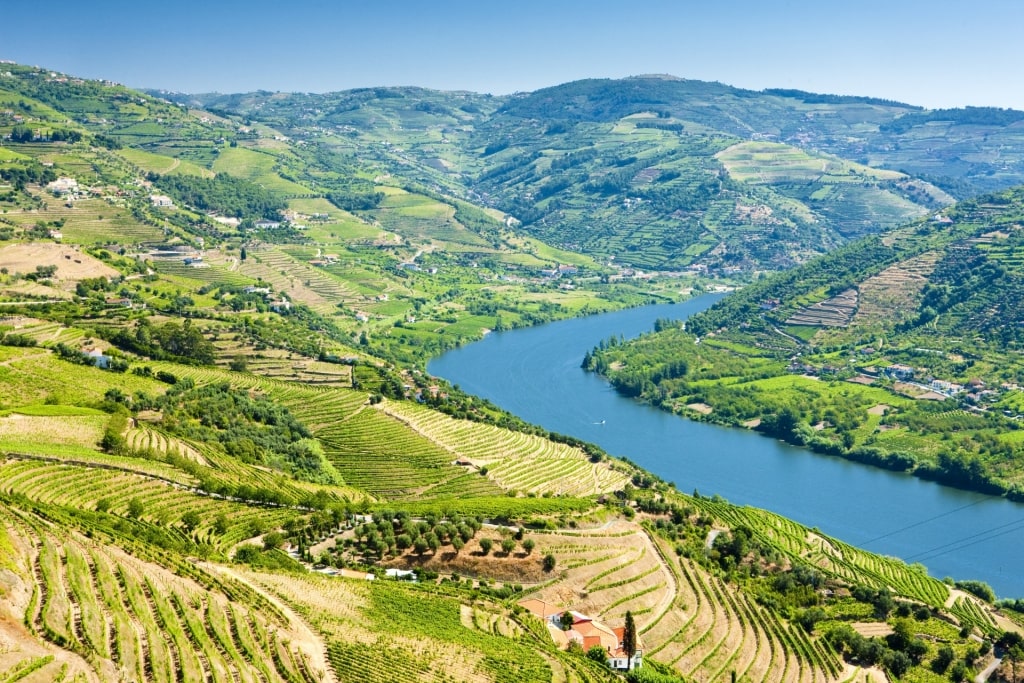
Douro Valley
Portugal may be relatively small, but the country’s compact size is a secret weapon when it comes to the breadth of picturesque day trips possible from its major cities.
Castle-crowned villages, ornate palaces, award-winning vineyards, and pretty coastal towns create a landscape worth leaving the urban area for, but is it Porto or Lisbon which offers the best gateway to the country’s other attractions?
Depending on your interests, the answer could be either, with both cities providing unforgettable experiences on their peripherals.
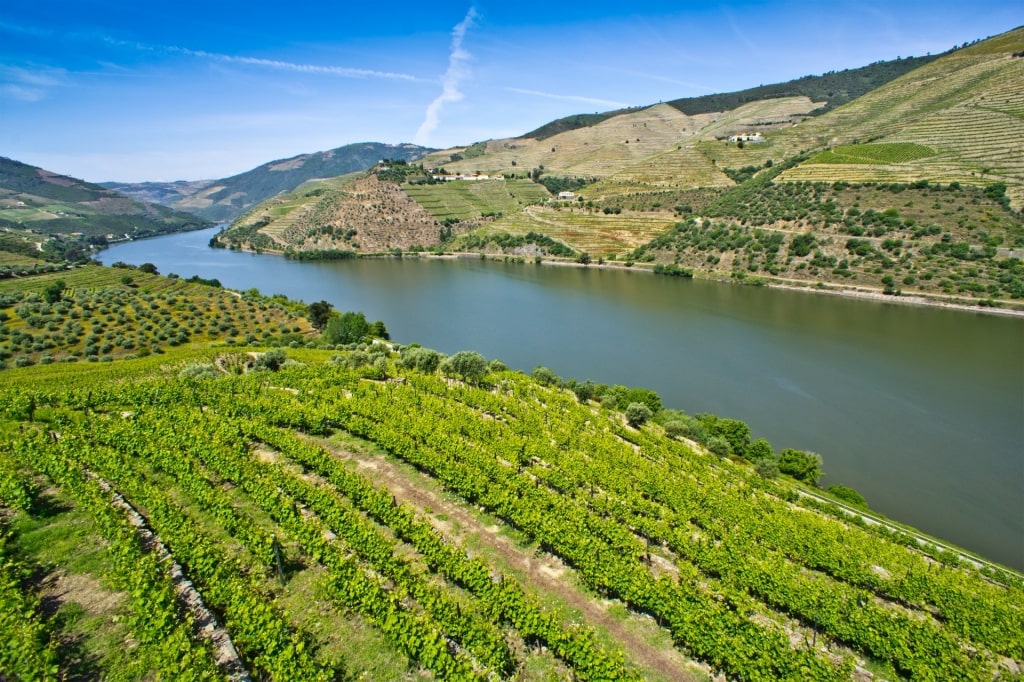
Douro Valley
From Porto, the most popular day trip is undoubtedly the Douro Valley, one of the most beautiful places in Portugal.
Trackable by scenic train, car, or—to follow in the “footsteps” of the country’s famed fortified wine—by a Rabelo (a traditional Portuguese wooden boat), a voyage upstream will bring you to this astonishing UNESCO-listed landscape.
Steep-stacked vineyards set the scene for lavish port wine samplings, while the regional museum provides an informative overview of the world’s oldest demarcated wine region.

Guimarães
Medieval Guimarães, crowned by one of the country’s best-preserved castles, is also less than an hour from Porto.
Here, in Portugal’s first capital city, cobbled streets, crooked wooden balconies, and bygone palaces provide the perfect backdrop to dive into the country’s founding history.
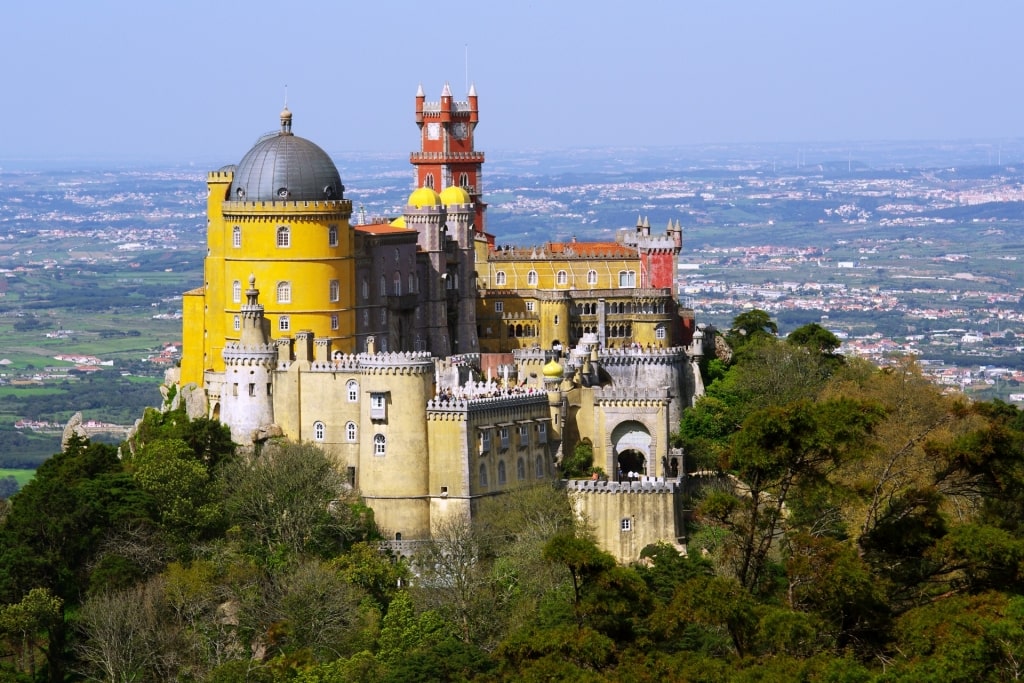
National Palace of Pena, Sintra
Heading south, the capital is likewise awash with outing options. To the west of Lisbon, the whimsical palaces of Sintra, once a royal hideaway, dot their namesake mountain range.
You’ll find some of the country’s finest architectural feats among the verdant landscape. Some of the best things to do in Sintra include visiting the lofty and colorful National Palace of Pena, or the Renaissance-style Quinta da Regaleira, both of which could be lifted straight from a fairytale.
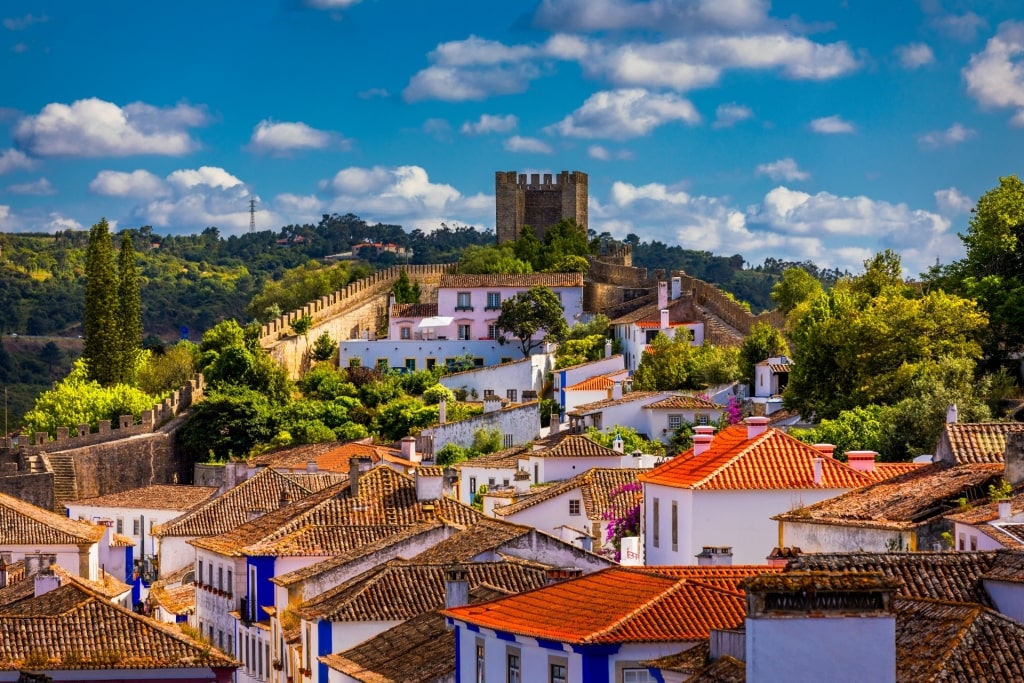
Obidos
Other noteworthy day trips from Lisbon include Obidos, Portugal’s most impressive walled medieval town; Cascais, a chic and classy coastal resort; and Mafra National Palace, a vast and UNESCO-listed Baroque monastery and former royal retreat.
These attractions are worth visiting especially if you have at least three days in Lisbon.
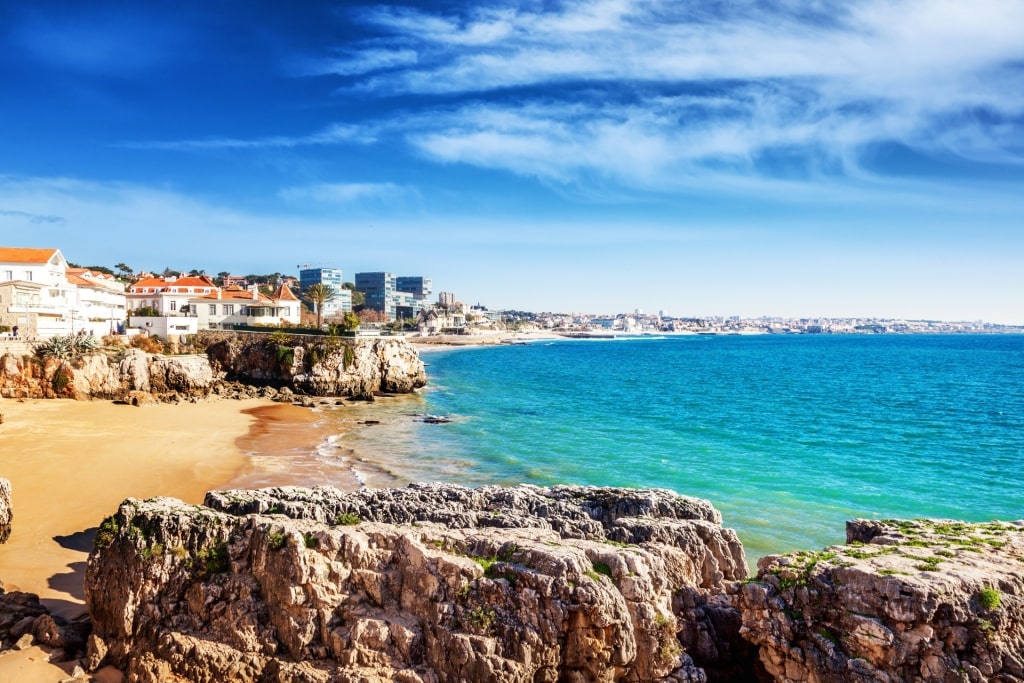
Cascais, Lisbon
As you can see, comparing the cities’ nearby attractions is enjoyable, but not necessary. Both regions deliver history, nature, and culture in spades.
If you’d prefer not to entertain the Lisbon vs Porto debate, why not visit both? Browse Celebrity’s Portugal cruises to start planning a sun-drenched voyage combining these captivating coastal cities.
